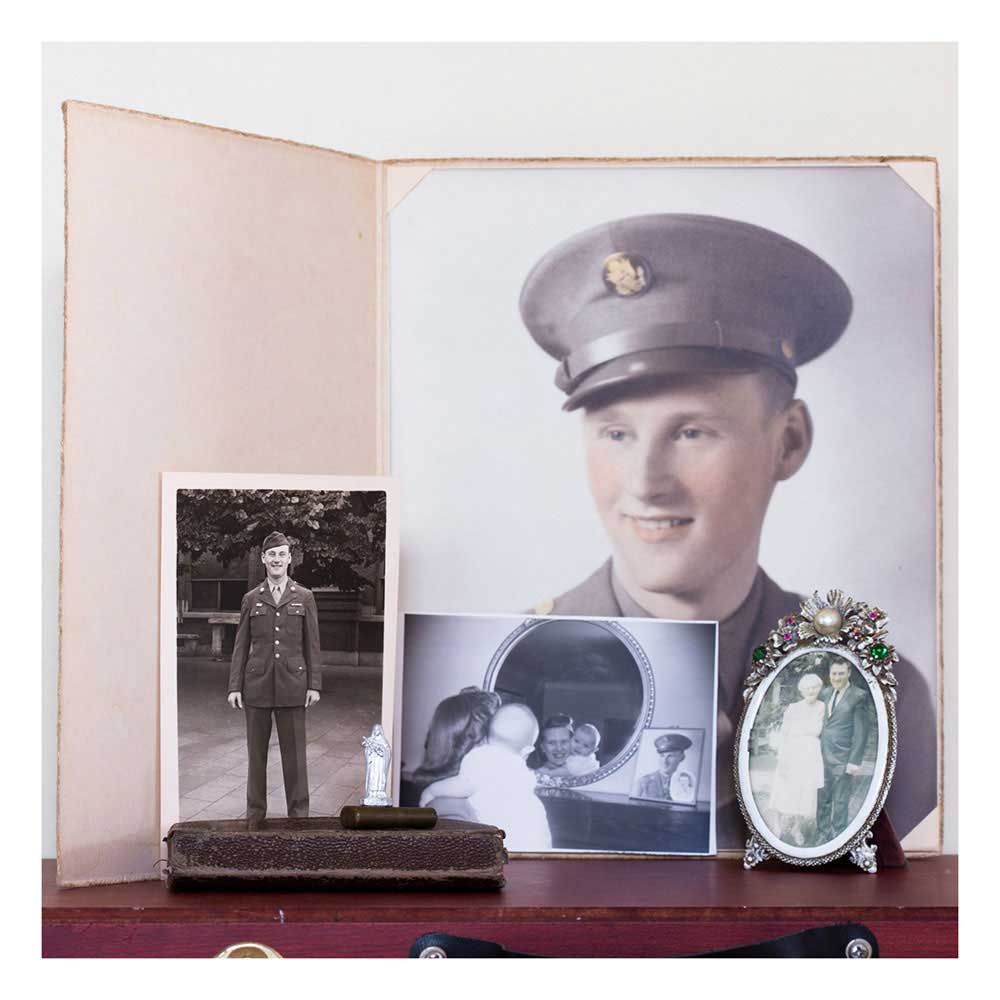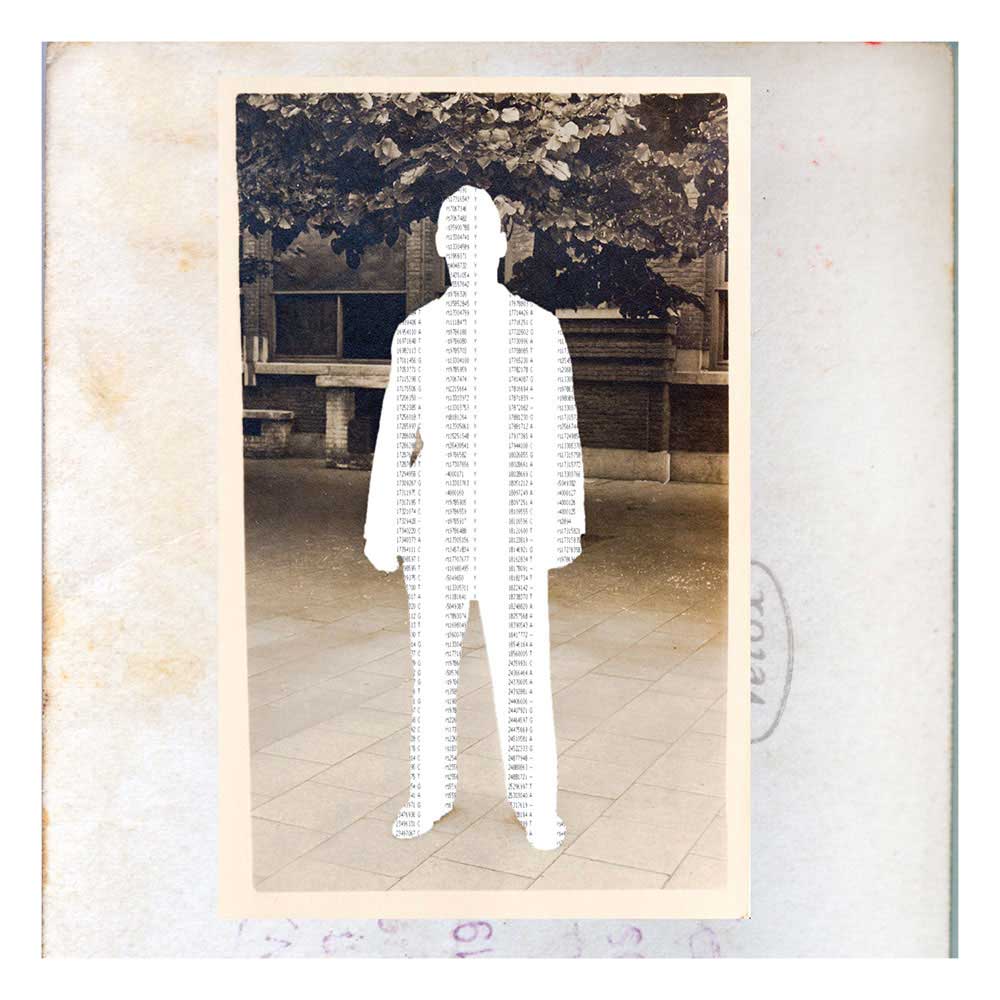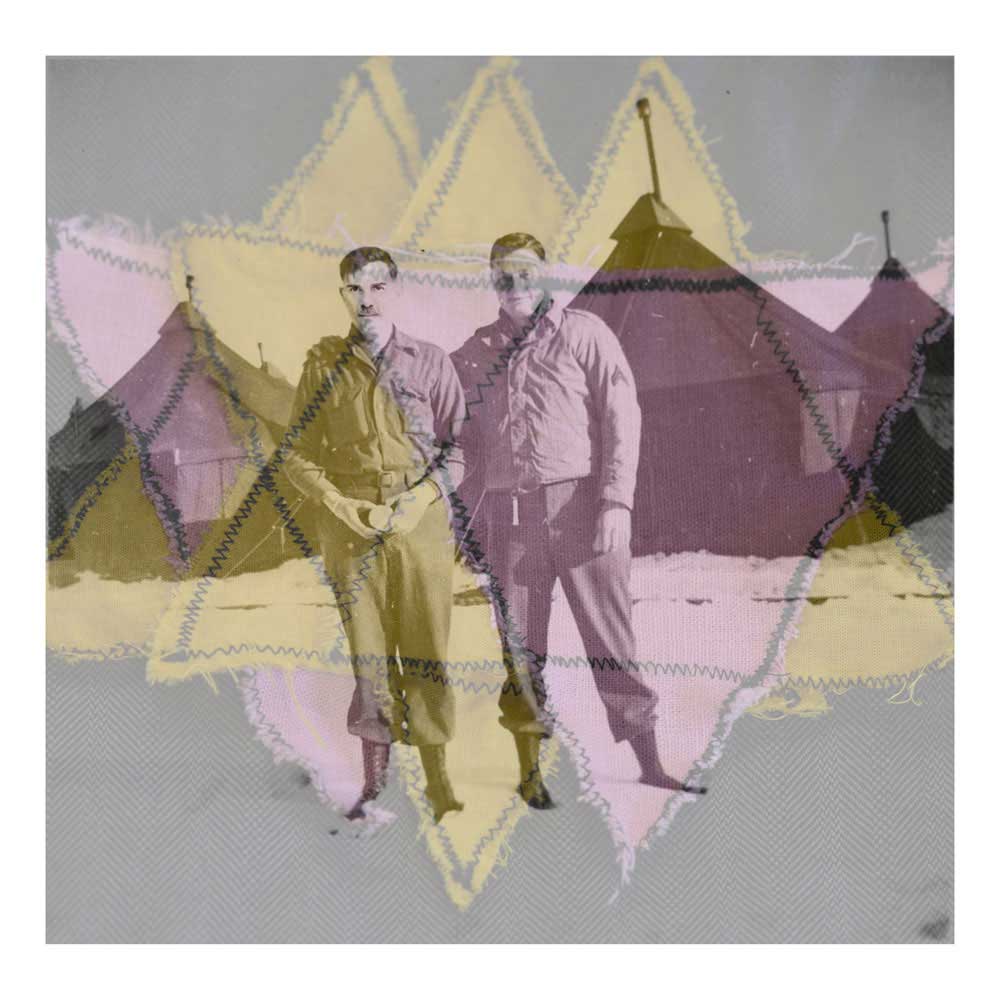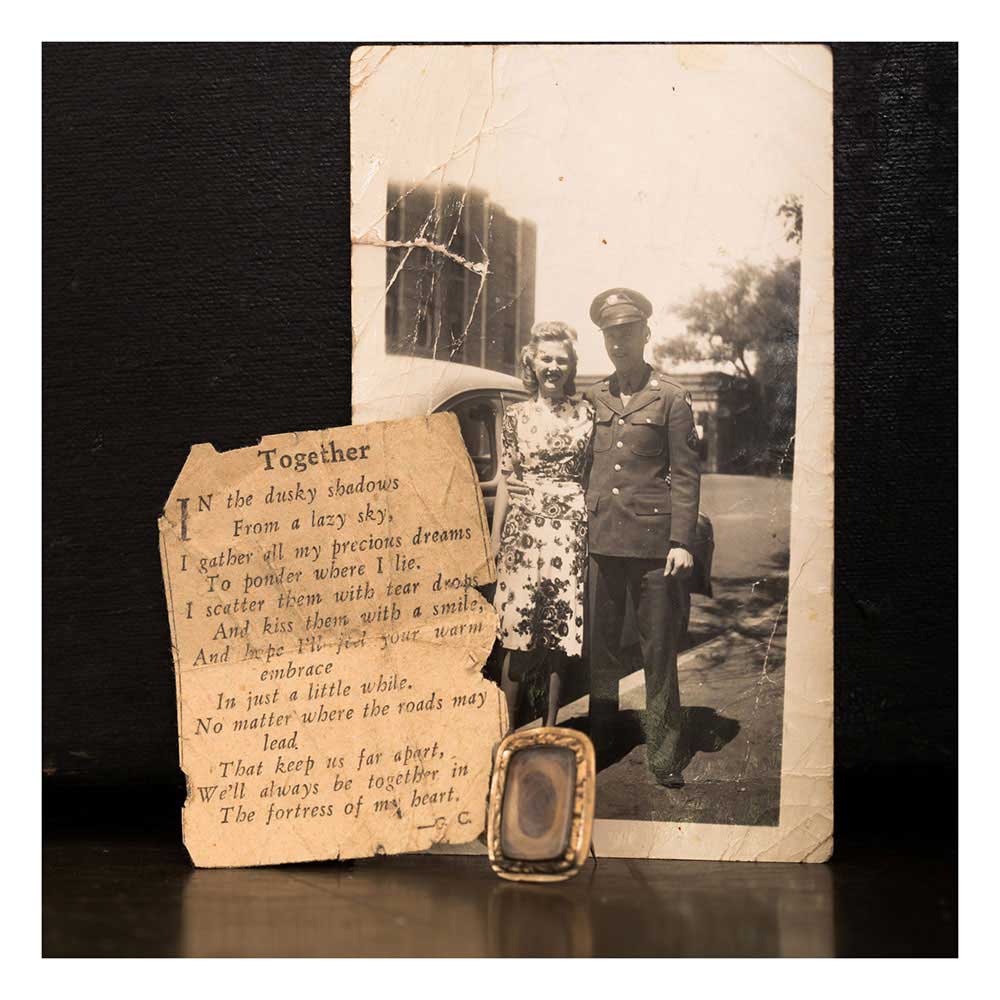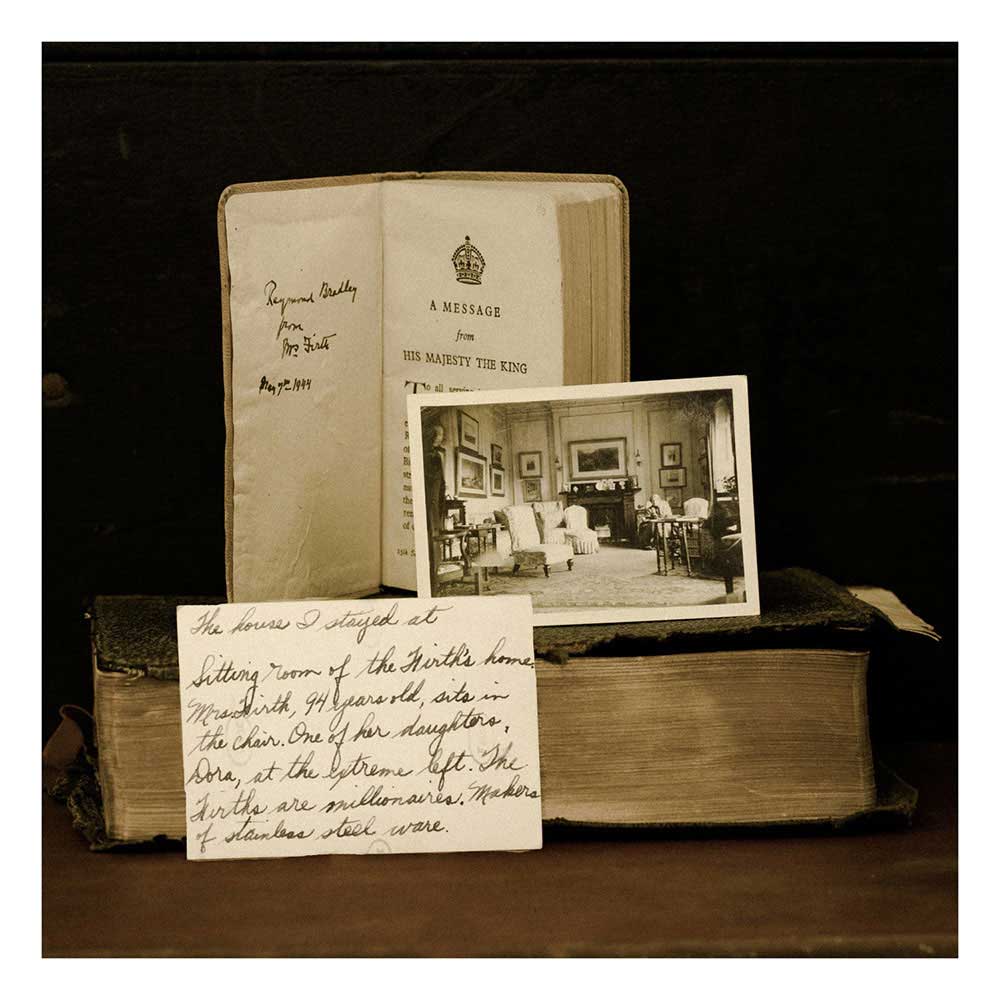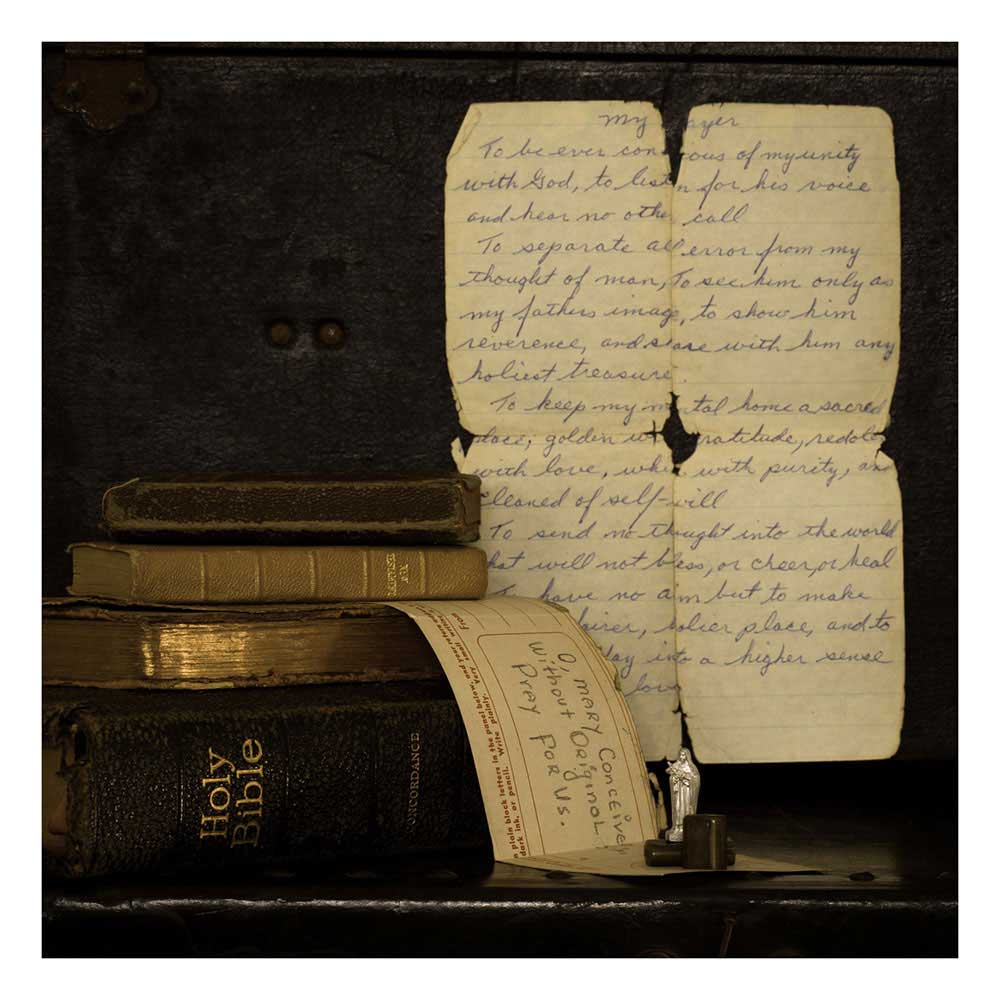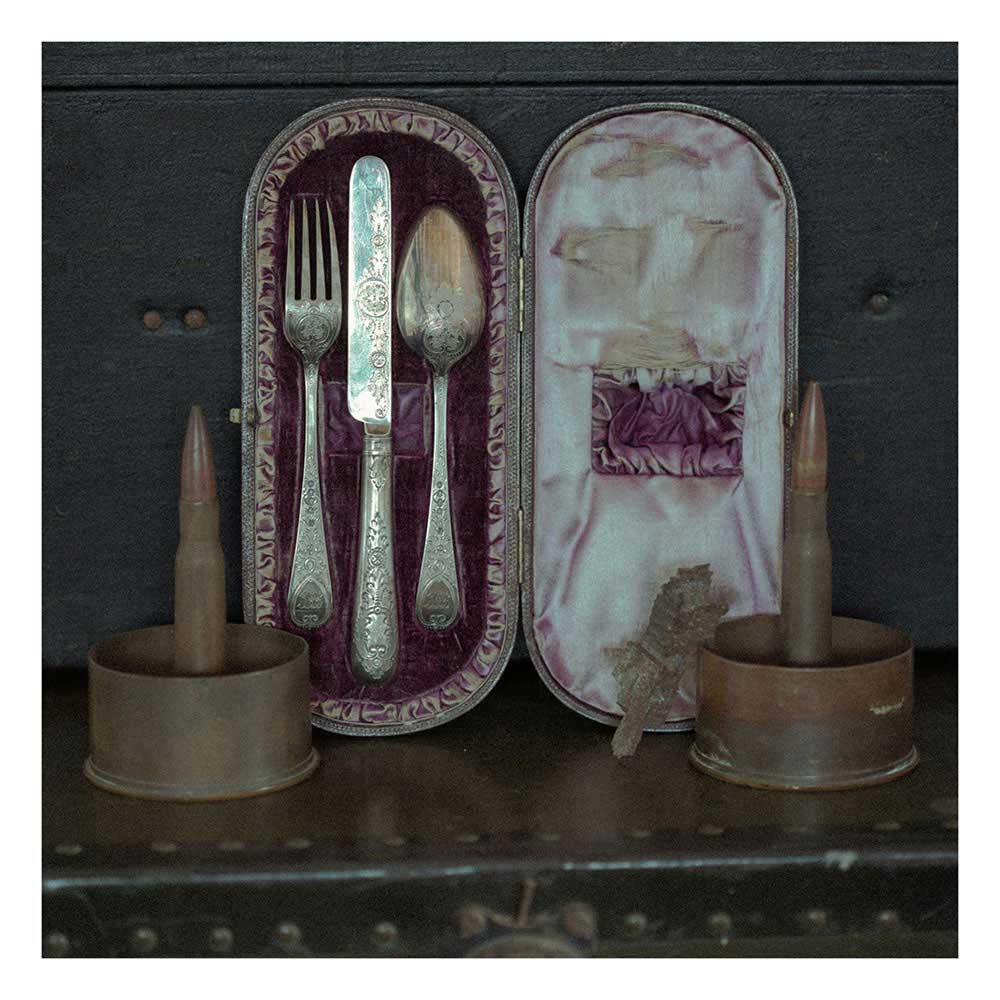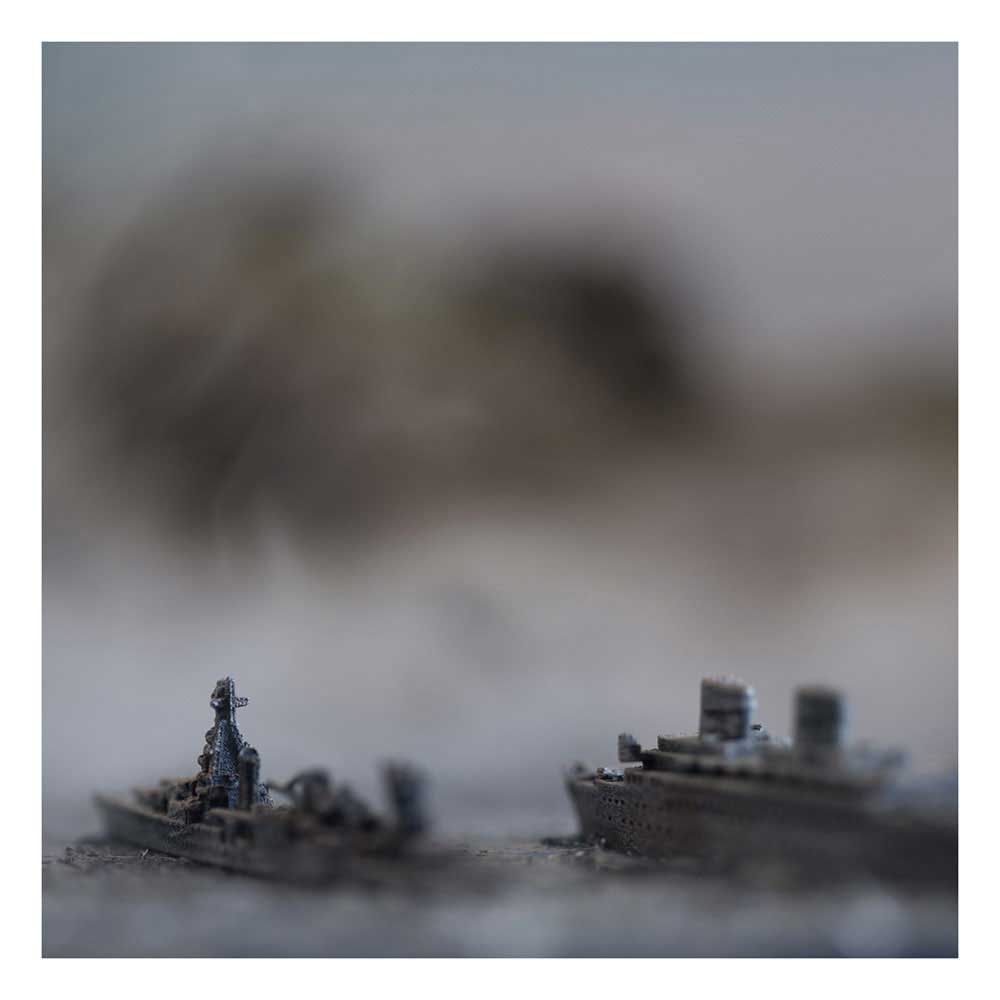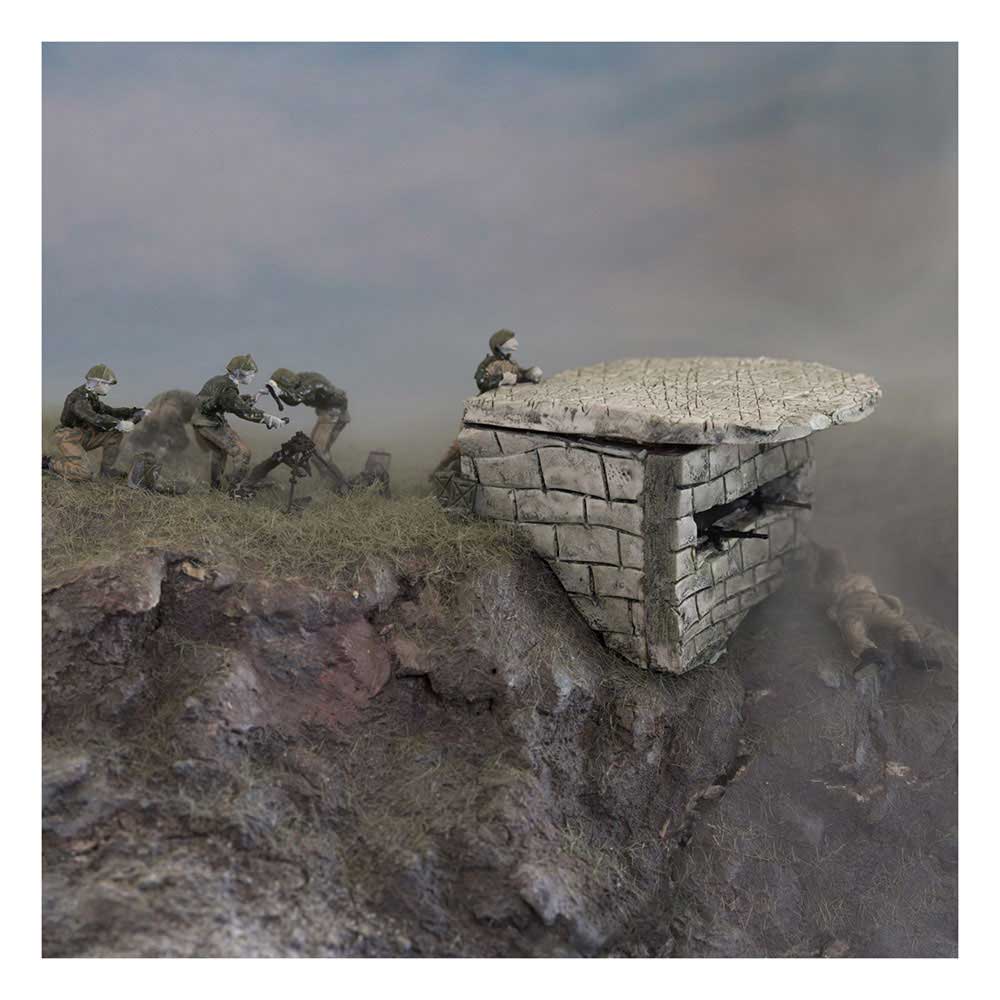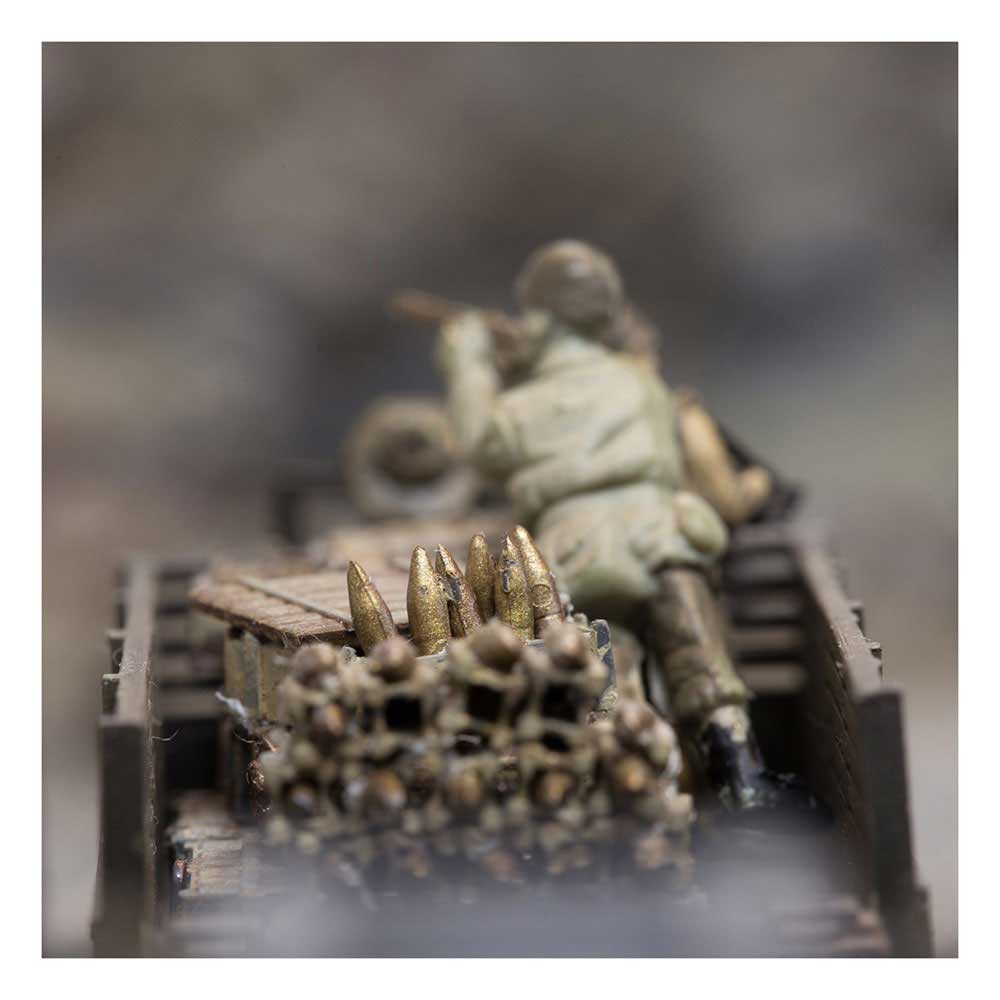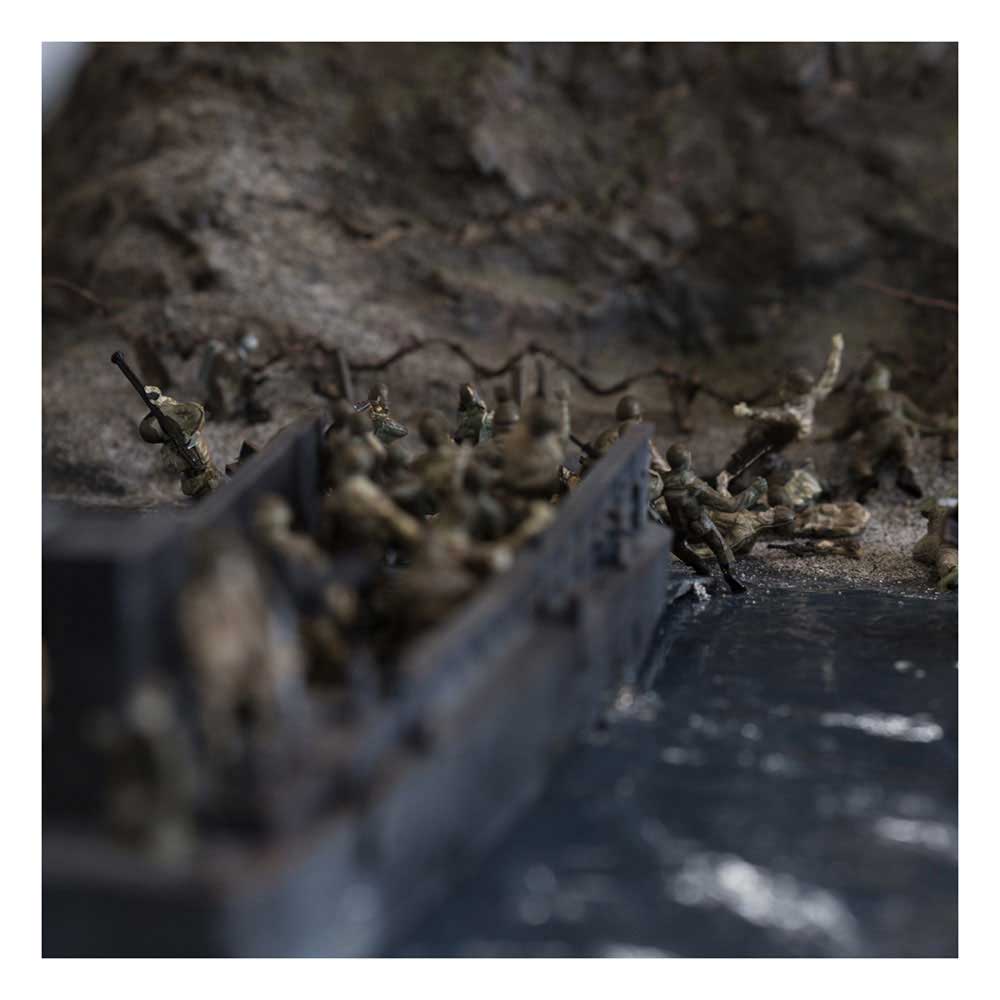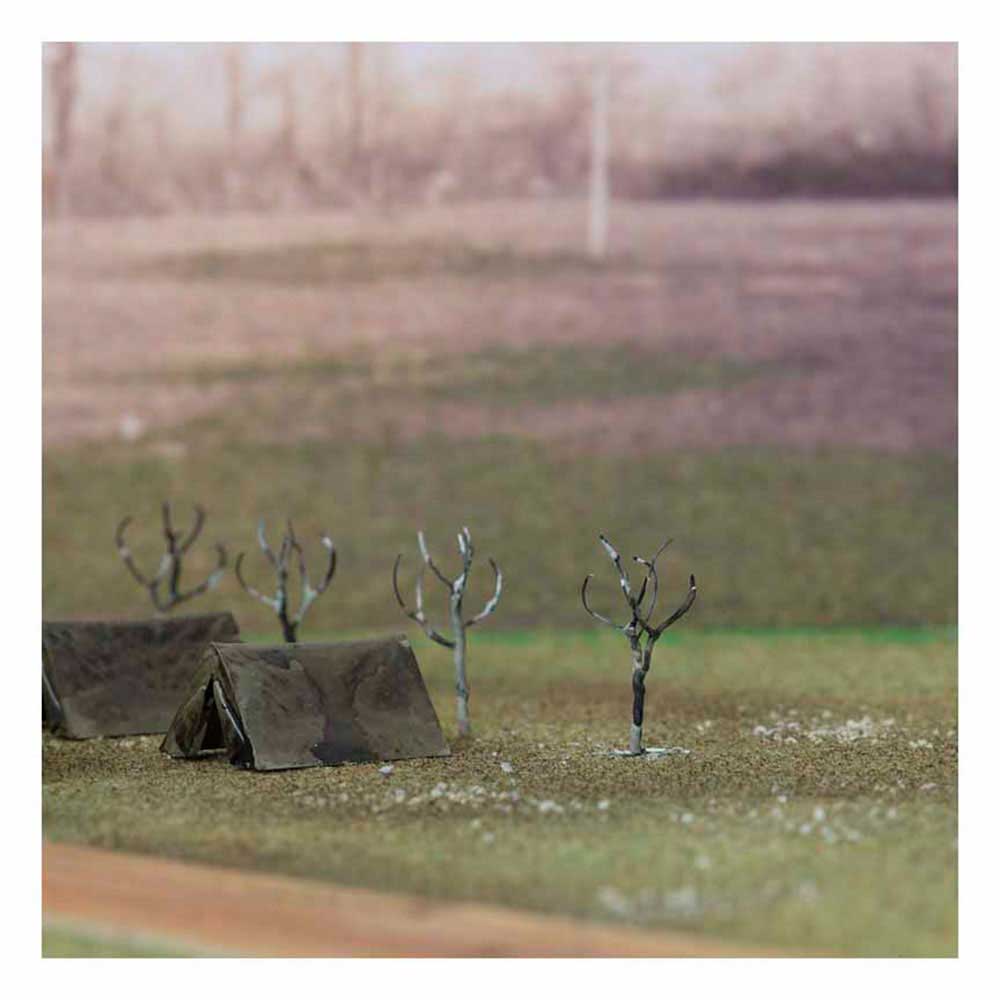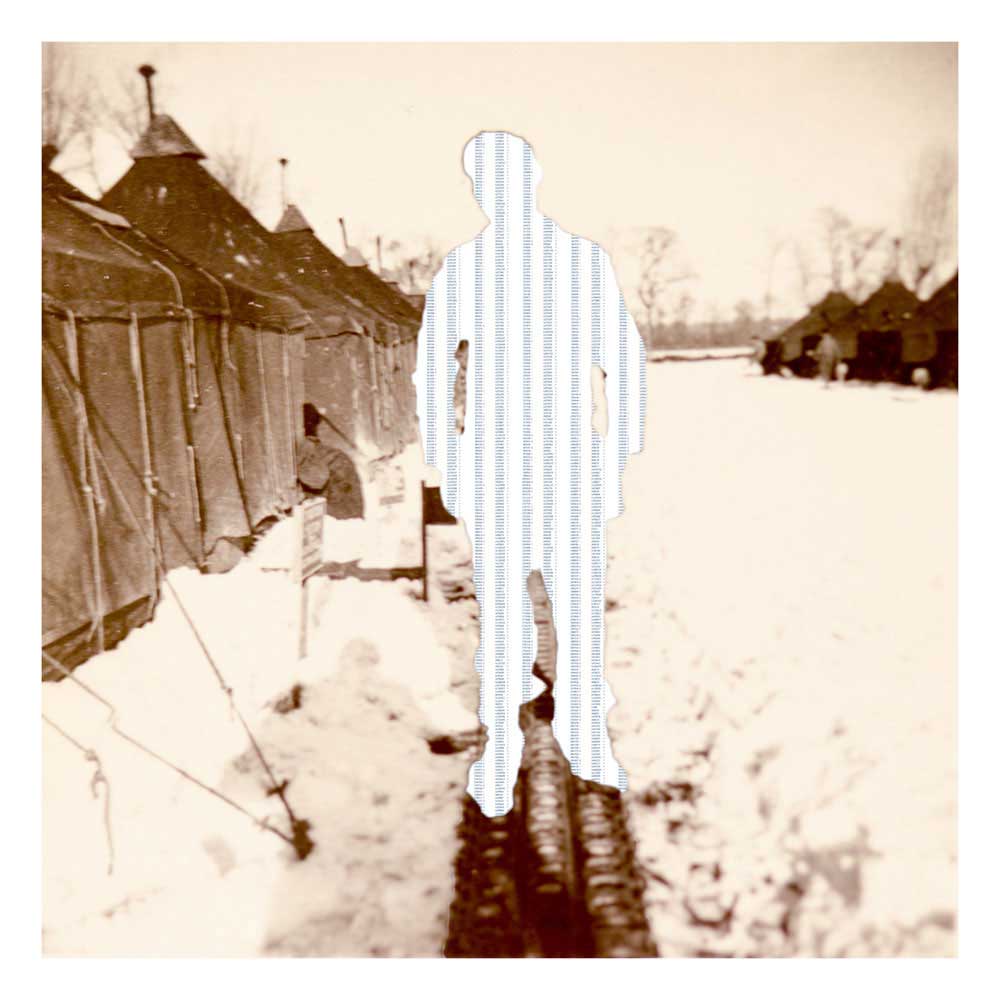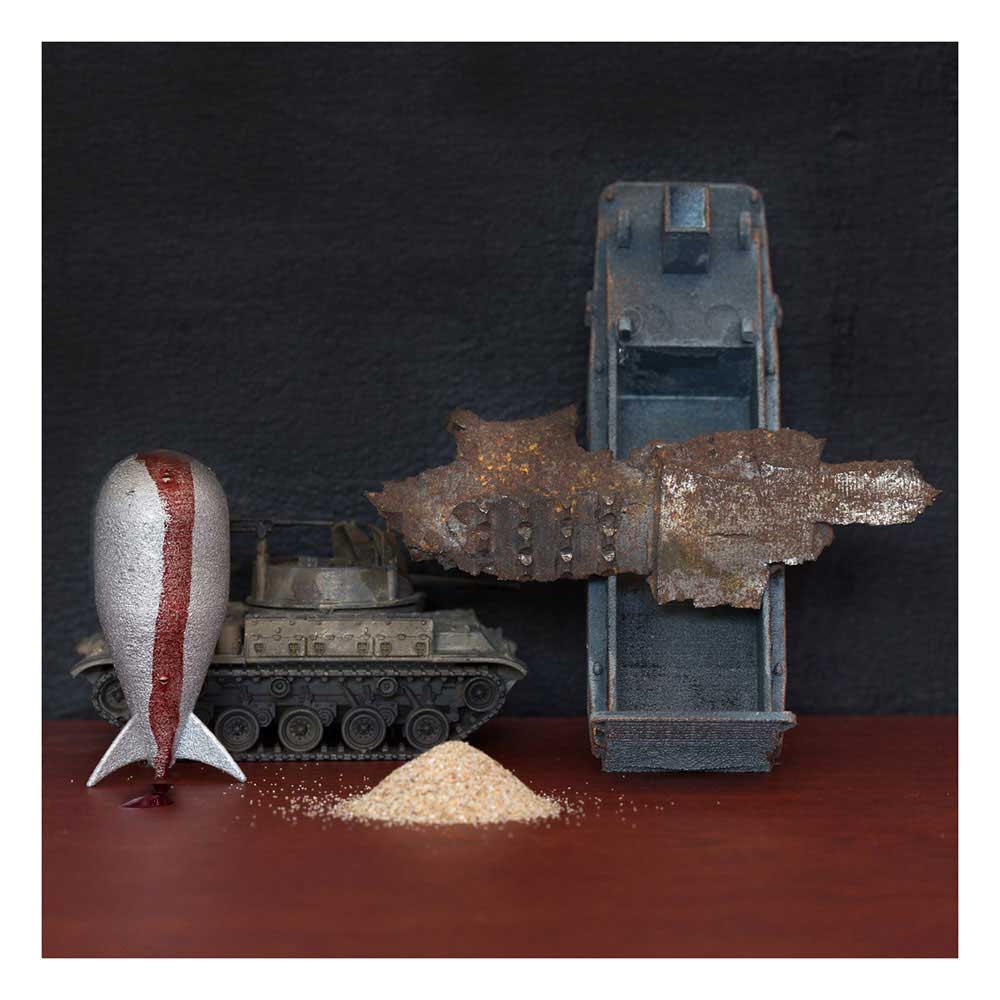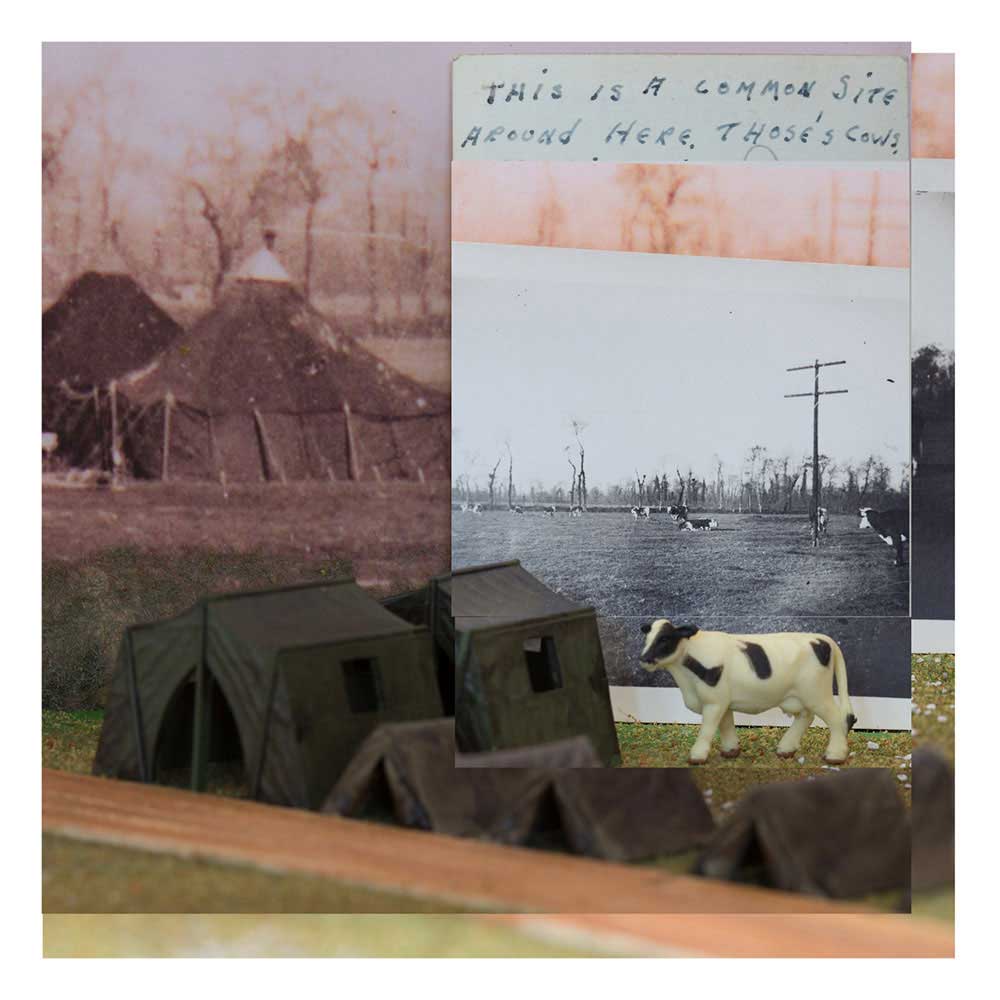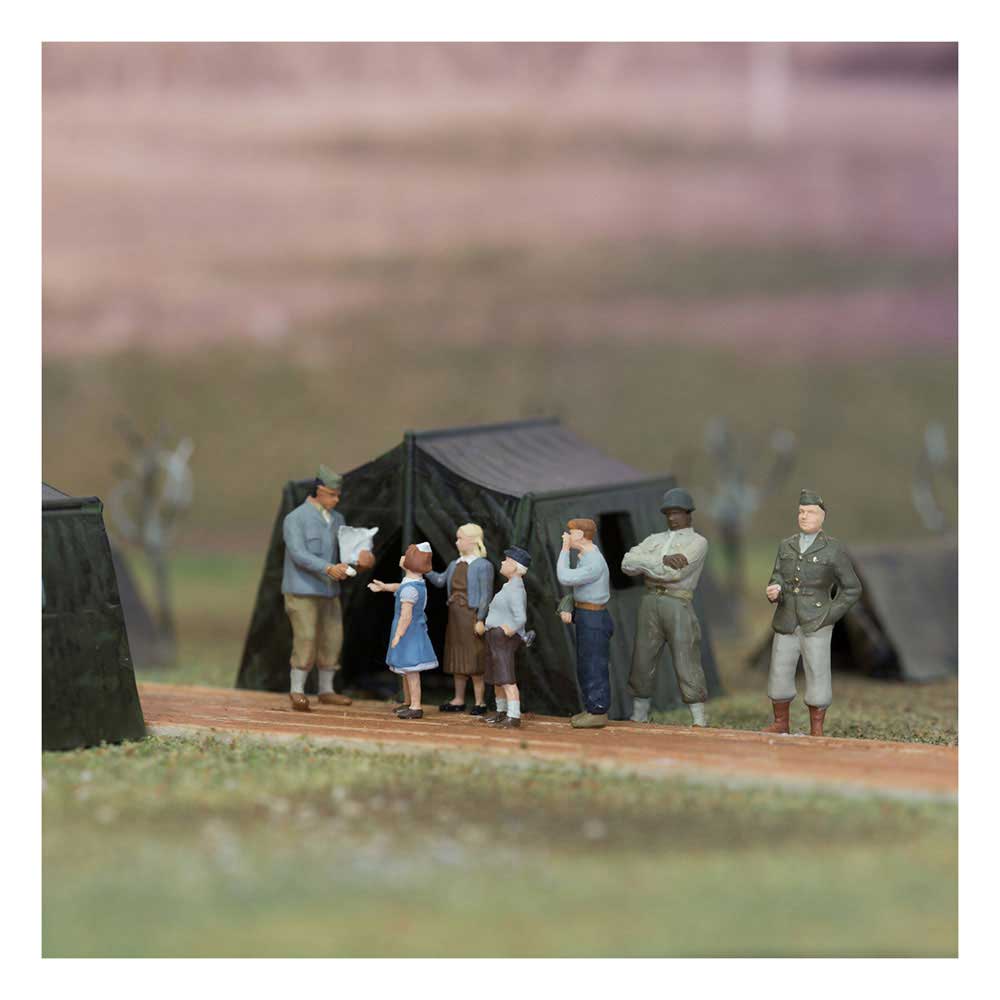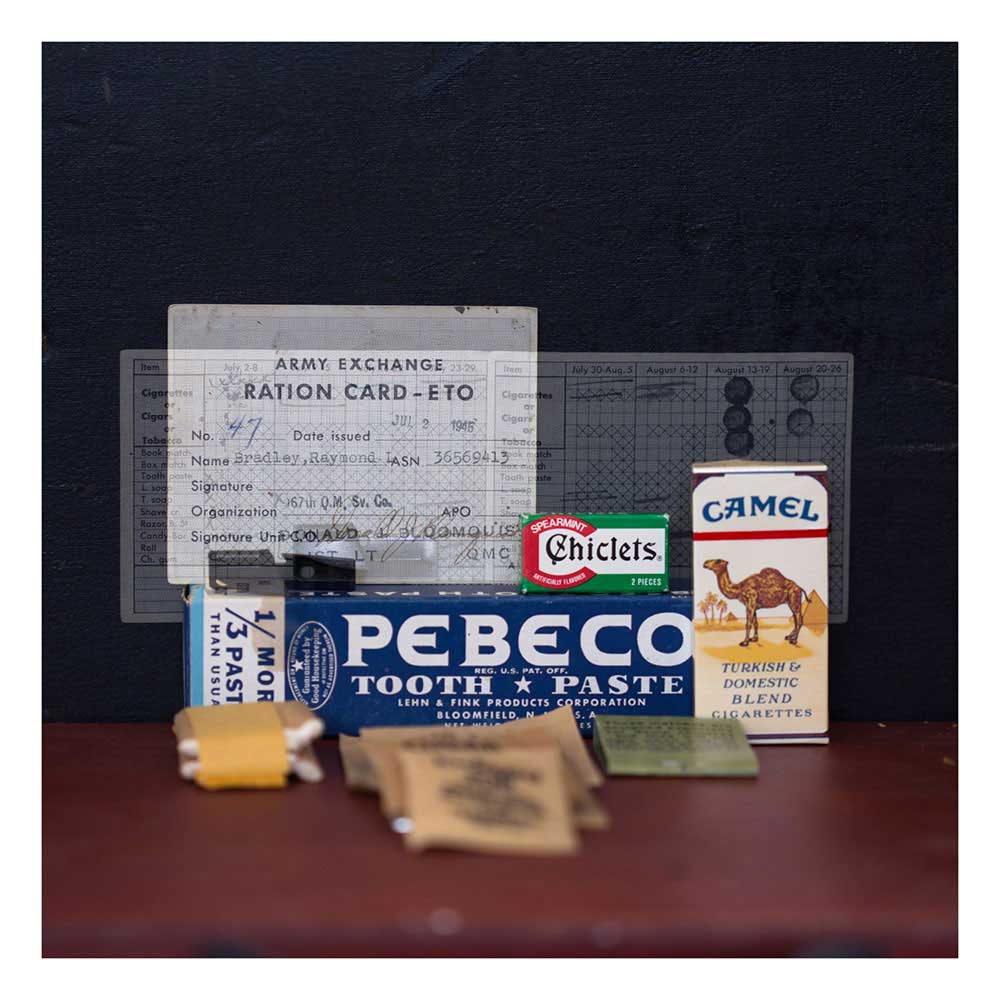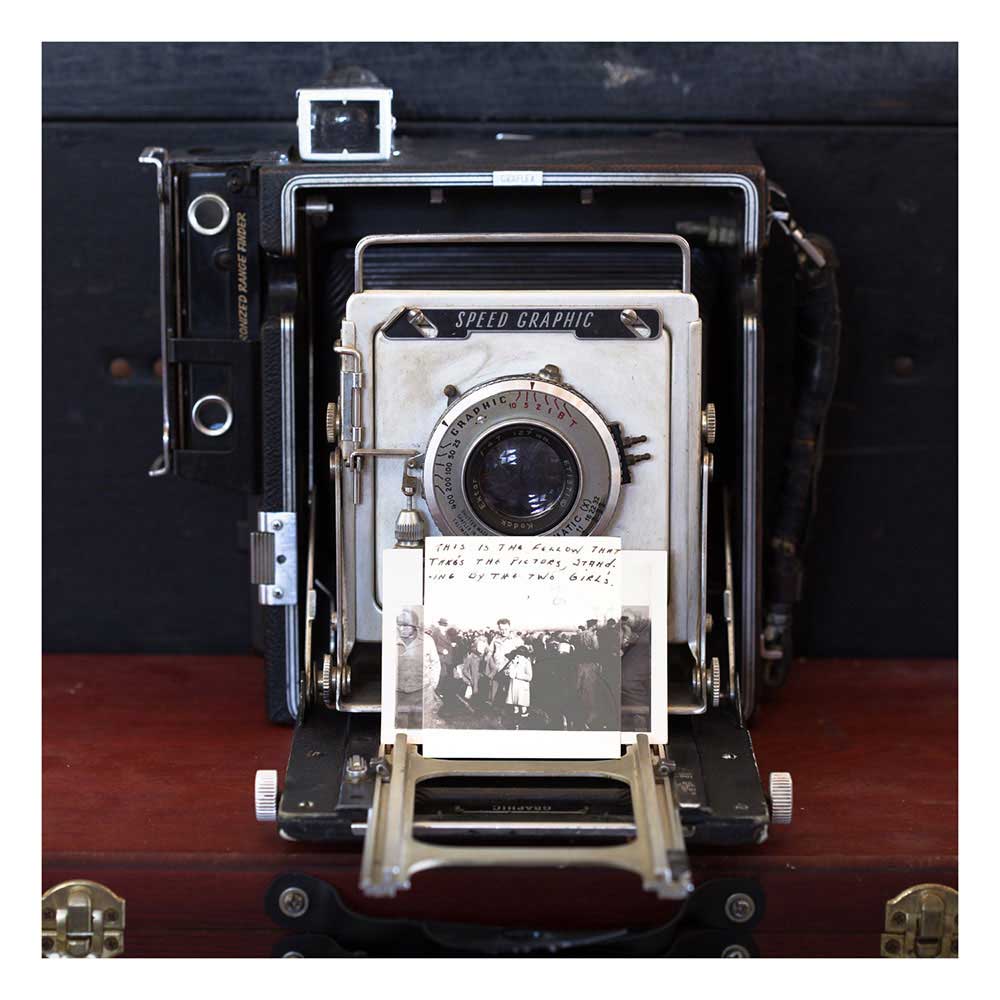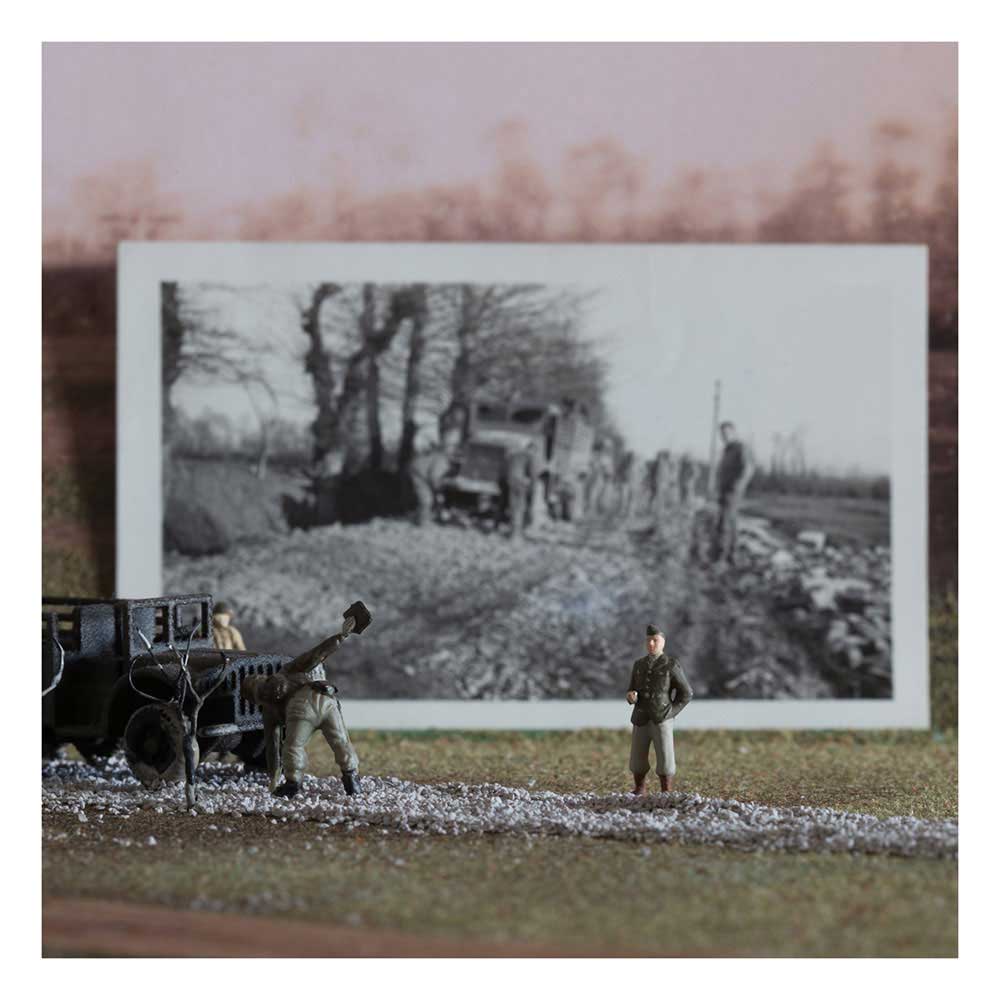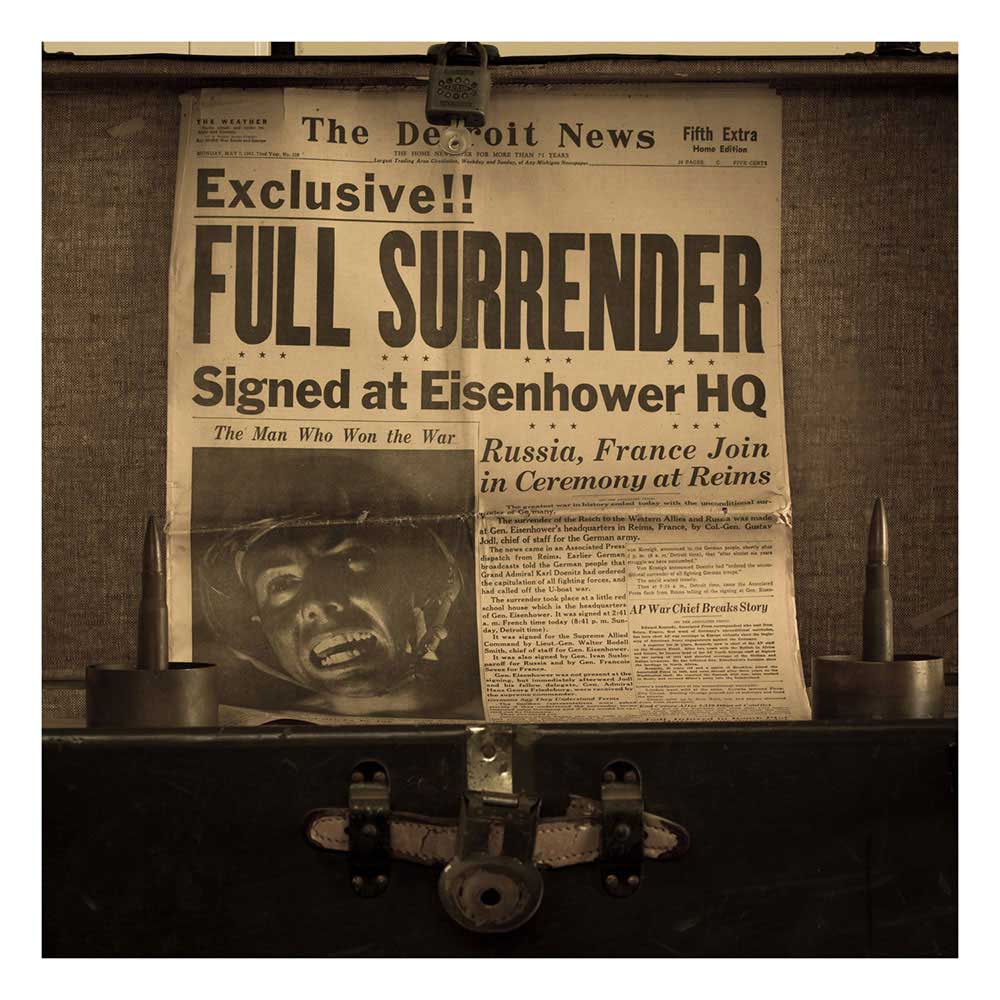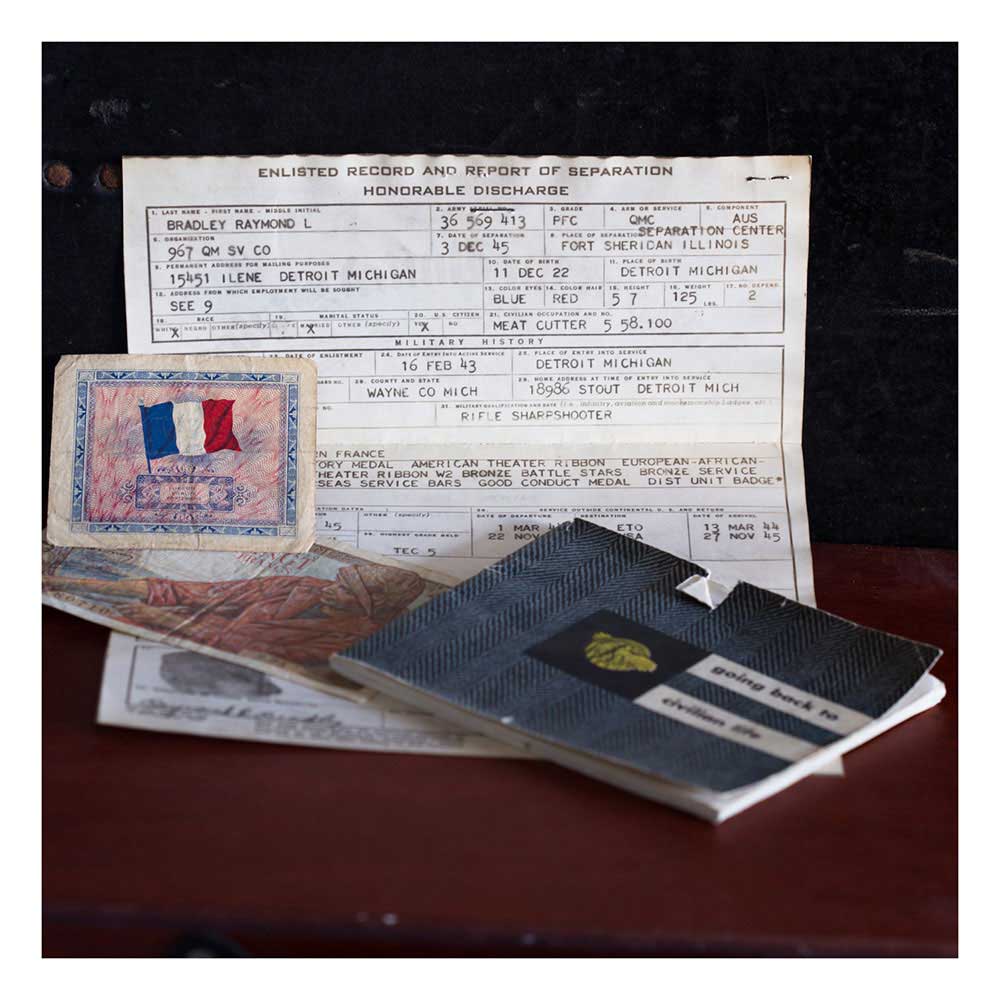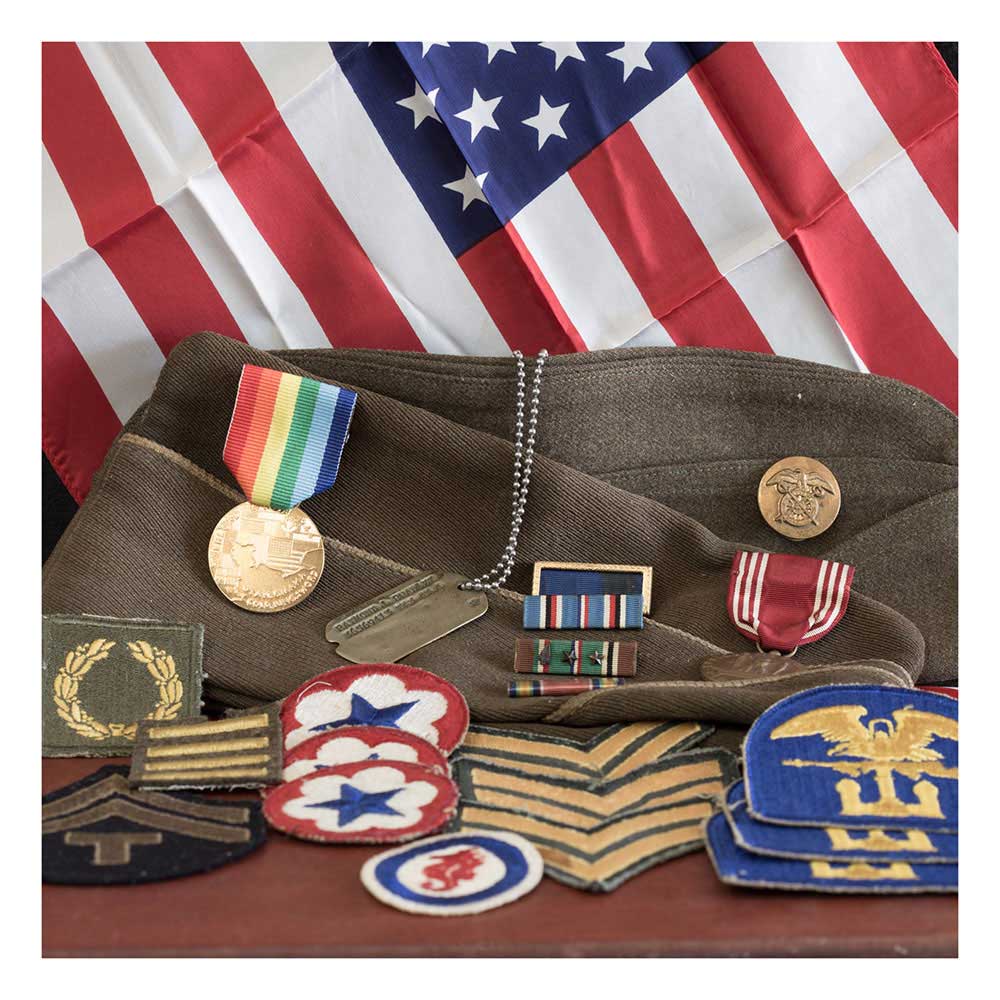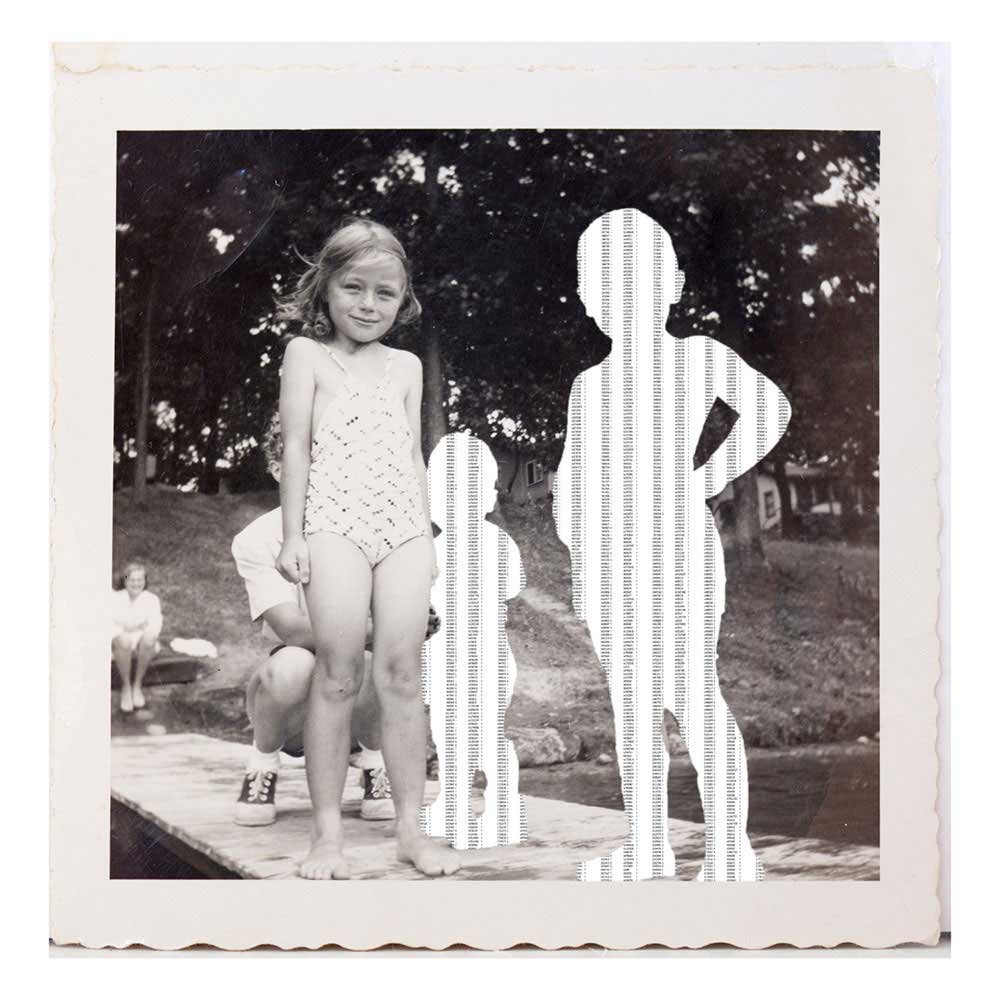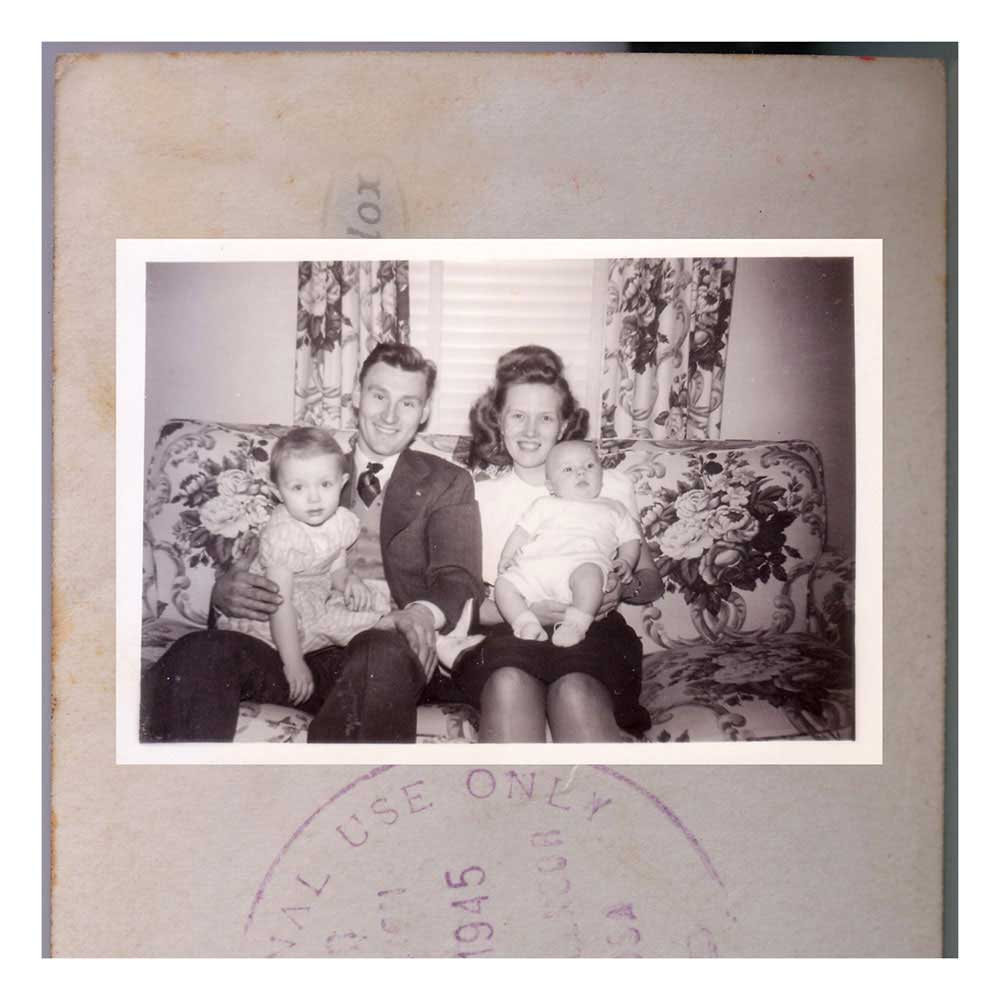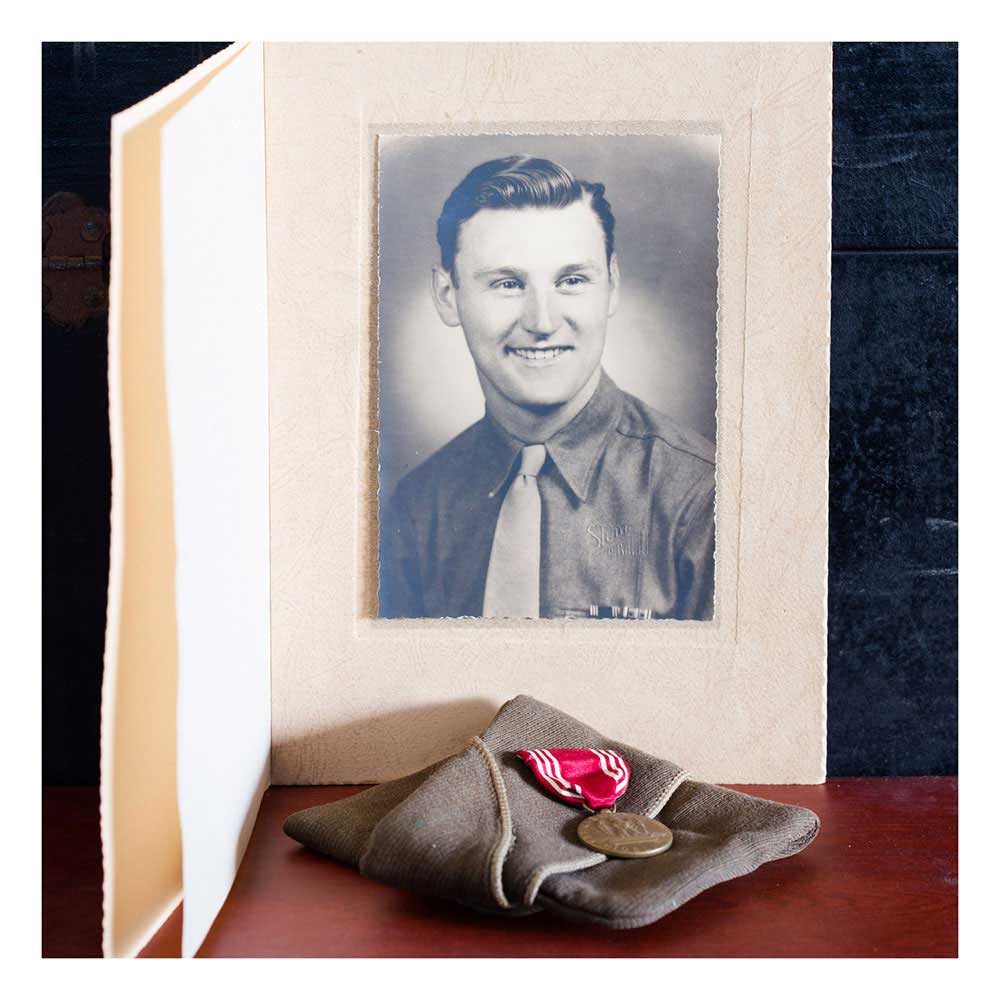War Stories I Never Heard explores discovering a loved one’s World War 2 military stories after their death; and the longing for deeper personal connection with them after they have gone.
My grandfather Raymond Bradley was just 21 years old when he was drafted into the U.S. Army in 1943 to fight Hitler’s Nazi regime that was taking over the world. Hitler had been trying to create a superior race by killing the “unfit,” including Jews, the physically/mentally handicapped, and homosexuals. I am gay and I recently discovered a small percentage of my ancestry is Ashkenazi Jewish. Had I been living in 1944, my life would have been in danger; my grandfather was fighting for me 75 years ago without his knowing it.
My parents divorced in 1976 when I was seven. After the divorce, I only saw him a few times, once shortly before he passed in 2008 at 85 years old. Grandpa never talked about the war.
After he passed, I was given a small box of photographs and mementos of my Grandpa Ray. I knew he had fought in Normandy, but it never registered as anything important. All of a sudden, holding his stripes and medals in my hands, I needed to know his about his time in battle.
I began to research where he was the morning of June 6, 1944, D-Day, and what his Army mission was on that infamous day. I wanted to know about the amphibious engineer badges included with his things. I asked my family, but no one knew anything beyond that he was a cook.
Being a cook was not to be discounted as a lesser role, I was told by an Army veteran and World War II historian. The Army Amphibious Engineer units worked as a team to complete their mission. Grandpa had to learn every aspect of being an amphibious engineer in the 6th Engineer Special Brigade so that if everyone else in his unit was killed, even the cook could complete the mission. Their mission was delivering ammunition to the front line.
Due to the limited information I had, I created dioramas to fill in the gaps of war images and to recreate some scenes from photographs my grandpa had kept. I tell about his timeserving in the Army during WWII through still-life arrangements of memorabilia, photo collages, and use our genetic DNA codes, specifically, our shared Y-chromosome code to symbolize our family lineage. [Official Website]
